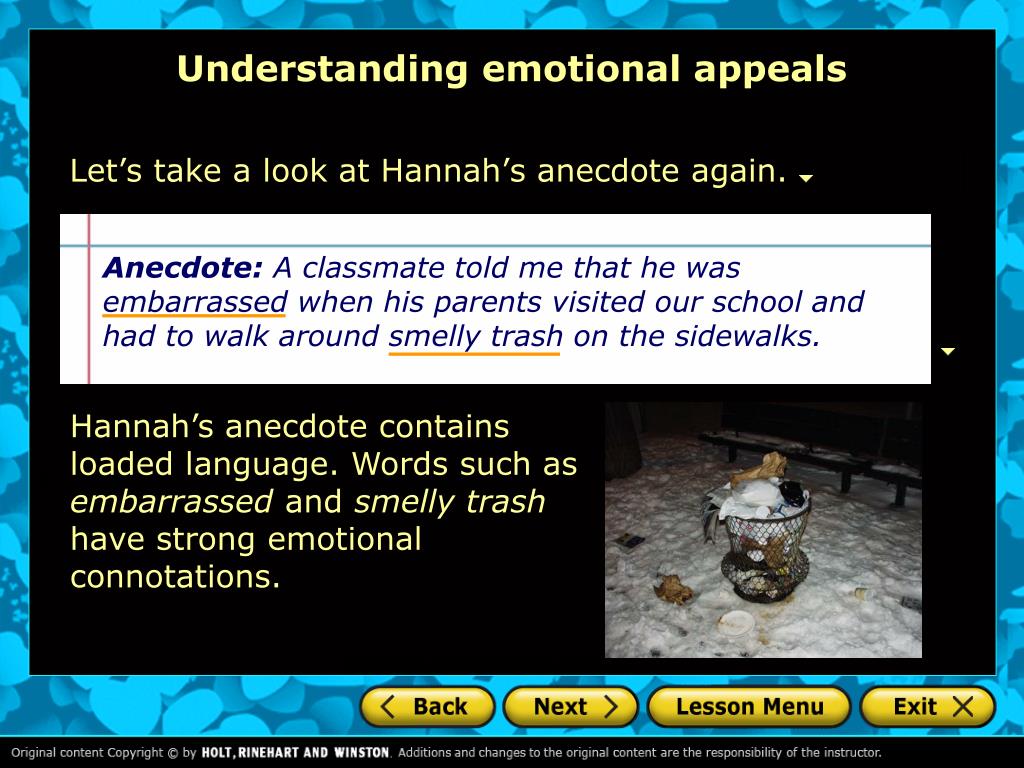

What the needs is to make the topic come alive for the reader. However, once the student starts working on the paper, he notices that he has a collection of facts and figures from which the audience will easily be able to disconnect.

Human trafficking-abducting or entrapping people (usually women and children) and subjecting them to horrific working situations-should be a subject that is already fraught with emotion. Take, for instance, a student who is writing an essay on human trafficking. However, it is important to determine when pathos will be useful and when it will only serve to muddy the argumentative waters. Pathos offers a way for the audience to relate to the subject through commonly held emotions. Used correctly, pathos can make a bland argument come alive for the audience. Each writer must choose which combination of rhetorical devices will work well for his or her writing and will suit the chosen topic.

However, not every argument employs all three rhetorical devices. Pathos works in conjunction with logos (logic) and ethos (credibility) to help form a solid argument. Relying too much on pathos, though, can make your writing sound like an after-school special. Now that you’re an adult, it becomes easier to feel frustrated, and even manipulated, by an overload of emotion. Emotion, or “pathos,” is a rhetorical device that can be used in an argument to draw the audience in and to help it connect with the argument. When you were a child, that sort of heavy-handed emotionalism was effective in getting a point across. And they were often really emotionally driven.Īt the end of the show, the camera would pan out, showing the protagonist alone and suffering for the poor decisions that he or she had made.
#APPEAL TO EMOTION EXAMPLES TV#
Remember those after-school specials that aired on TV when you were a kid? They always had some obvious moral (like “don’t drink and drive”). “Let’s not forget that the little emotions are the great captains of our lives, and we obey them without realizing it.”


 0 kommentar(er)
0 kommentar(er)
